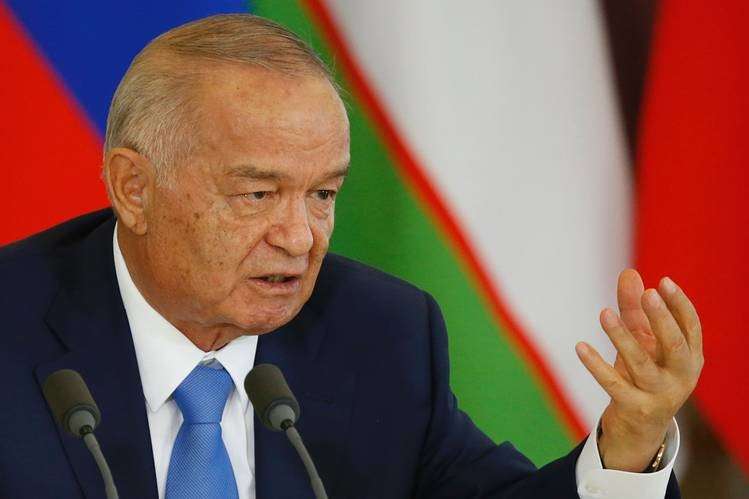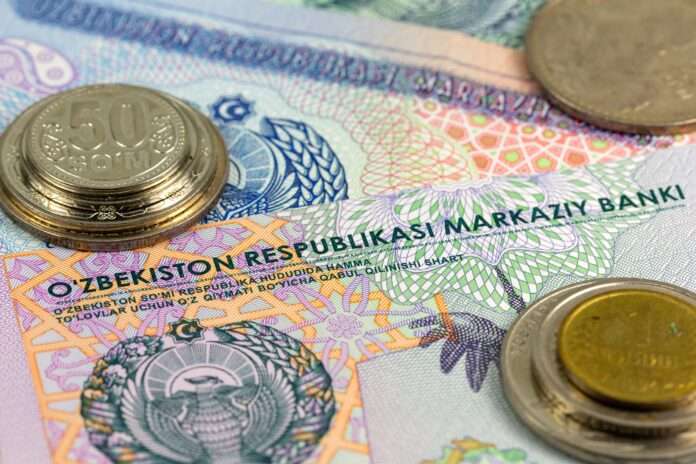Uzbekistan’s commercial banks do not attract the speculative banking capital. Also its banks do not participate in any speculative banking operations due to which its domestic banking system is stable and strong. Foreign rating agencies give the commercial banks of Uzbekistan stable ratings since the banking system of the country develops on strong basis, augment its own capital and meets all international norms of the Basel Oversight Committee. In this, the banks augment crediting of the real sector of economy and develop the consumer crediting with strict observance of all principles of sound banking policy.
The country mainly relies not only on the large commercial banks/corporation but on small business and private entrepreneurship too. For over the last three years the state lowered the level of taxation of small business entities almost twofold and granted them free access to raw and sale markets, credit resources, simplified and reduced the price of all registration procedures and procedures to start a commercial activity, enhanced the legal protection and simplified the tax administration. It allowed increasing the share of small business in GDP for over the last period from 38 percent to 48 percent, despite the fact that over the last years the large enterprises of the car-making, metallurgical, chemical, oil and gas, textile and other industries increased the volumes of production by double-digit figures.
International rating agency Standard & Poor (June 2015)
The international rating agency Standard and Poor recently conducted a conference (June, 2015) about the banking industry of Uzbekistan on which it also published a comprehensive report. It rated it as productive and progressive. It reconfirmed the positive role of Uzbekistan’s banking industry in the development of its macro-economy. Its report suggested that constant high growth of Uzbekistan’s GDP is supported with expansion of crediting of real sector of economy.
Its report also talked highly about the introduction of the Presidential Resolution (May, 2015) on Basel III and improving capitalization and liquidity of the banking sector of Uzbekistan. It would further strengthen the domestic banking industry of Uzbekistan. It rated capitalization of the banking sector of Uzbekistan as appropriate and growth of assets remained high and positive.
According to report the outlook of the banking system of Uzbekistan is stable despite worsening of ratings of some CIS countries. The figures of the banking sector of Uzbekistan are at high level and exceed requirements of international standards. The different reforms introduced by Uzbekistan government are now paying its dividends. It further strengthened financial sustainability of the banking system and helped to ensure growth of aggregate capital of the bank twice in last five years. The figure rose by 25 percent in last year. The level of capital adequacy makes up almost 24 percent which three times higher compared to international standard 8 percent.
International rating agency Standard & Poor also appreciated efficient supervision of the central bank of Uzbekistan through regular monitoring of quality of assets, diversification of loan portfolio and the last but not the least, capital adequacy and liquidity.
Monetary Policy (2014-15)
Monetary policy plays a very important role in the development of a country. It regulates credit policies and controls over non-performing loans and currency exchange management. Monetary policy of Uzbekistan (April, 30) also helped massive industrialization and kept the refinancing rate at nine percent. The refinancing rate was reduced by the central bank from 10 to nine percent from Jan. 1, 2015. The Central Bank of Uzbekistan has applied the floating rate of refinancing, corrected depending on the dynamics of inflation, demand and supply in the money market, since 2000. From July 2006 to January 2011, the rate remained at 14 percent, and in 2011-2013 it was at 12 percent. In early 2014, the central bank set the refinancing rate at 10 percent per annum.
Banking & Financial System of Uzbekistan (2015)
Uzbekistan has established a traditional two-tier banking system supervised/controlled by the Central Bank of the Republic Uzbekistan (CBU). Its primary functions and tasks were set in the Law on the Central Bank adopted on December 1995. Now it systematically regulates the monetary authority. The main aim of the Central Bank is to maintain stability of the national currency. The Central Bank’s major tasks are working out/implementation of the monetary, credit and foreign exchange policy of the country; introduction of effective payment system in Uzbekistan; licensing and regulation of banking and finance activities; management of the cash service of the public budget jointly with the Ministry of Finance and the last but not the least, management of state reserves of the Republic of Uzbekistan (currency, precious metals, etc.)
Among the commercial banks of Uzbekistan the National Bank for Foreign Economic Activity (NBU) is among the best in the Central Asia and is the leading financial institution in Uzbekistan. NBU boasted a nationwide presence catering to both corporate and retail clients and is ranked 562nd in The Banker’s Top 1000 world’s largest banks. It has also 628 correspondent banks. It offers all types of banking and finance services to domestic and foreign customers. In order to attract inter-national capital to the republic, NBU actively cooperates with its foreign partners investment banks.
According to central bank of Uzbekistan its banking system is currently represented by 26 commercial banks, including three state-owned, 11 joint-stock, seven private and five banks operating with the involvement of foreign capital i.e. Hamkorbank, Savdogar, KDB Bank Uzbekistan, Uzbekistan-Turkish Bank and the subsidiary of the Iran’s Saderat bank).
H.E. introduced diversified but integrated meaningful banking and financial reforms in the country which served as a robust backbone for uplifting the economic growth of the country. It consolidated the financial stability of commercial banks and perfected their numerous activities at the level of international standards. Due to which many international credit rating agencies and financial institutions rated its banking industry among the best in the region and around the world.

President Islam Karimov’s Resolution on Measures to Further Elevate the Financial Sustainability of Commercial Banks and the Promote Their Resource Base
Signed on 6 May 2015 it has played an important role in the introduction of Basel III standards. The International Rating Agency Standard & Poor have always evaluated the capitalization of Uzbekistan’s banking system as stable, because the growth in assets that boost the incomes of commercial banks has been rather high. Moreover, major investment projects undertaken by the state with the participation of banks have a positive impact on the capitalization.”
The government of Uzbekistan also recognizes the importance of banking & financial sector reforms and supports financial activities through a variety of legal and regulatory frameworks, the most important being Presidential Resolution No. 1438 of November 2010: “On Priority Areas for Further Reforms and Sustainability Improvement of Country’s Finance and Banking System in 2011–2015 and Achieving High International Ratings. This resolution elaborates priorities for further reform including comprehensive programs for banks, nonbank institutions, and microfinance, and covering the extension of nonbank credit networks and their range of services”.
The international banking scenario has been weak and unstable for many years but due to rigorous banking and financial reforms in the country, the banking system of Uzbekistan has been estimated as “stable”. Uzbekistan government strongly supported its banking industry. The Central Bank of Uzbekistan played instrumental role in the development of its banking industry. Elements of transparency promoted financial discipline. Systematic exchange of credit information and the conduct of transactions in collaterals promoted growth in rating assessments. Many specific practical measures aimed at bolstering the financial stability of the system have ensured the growth in the banks’ capital more than twofold in the last five years and by 25 percent over the last year.
Financial Growth (May, 2015)
According to the central bank of Uzbekistan’s latest report (May, 2015), the total assets of the commercial banks in Uzbekistan in Q1 2015 stood at 56.6 trillion soums. The total assets of the commercial banks of Uzbekistan were 56.2 trillion soums, and their total capital stood at 6.9 trillion soums in 2014. In Q1 2015, the total assets of the Uzbek banks rose by 0.7 percent, compared to last year’s figures. Moreover, the total loan portfolio of the Uzbek banks increased by 0.6 percent up to 35 trillion soums.
According to report the total volume of deposits attracted by the country’s banks amounted to 28.6 trillion soums in early April 2015. It increased up to 28.5 trillion soums i.e. growth of 0.4 percent. The aggregate bank capital also increased and remained at 6.9 trillion soums.
As previously reported, in 2014, the Uzbek banks’ total assets increased by 28.3 percent up to 56.2 trillion soums, the total loan portfolio of the banks rose by 31.3 percent up to 34.8 trillion soums, and the total equity bank capital increased over the year by 25.5 percent up to 6.9 trillion soums. In 2013, the total sum of assets of Uzbekistan’s commercial banks grew by 30 percent, while for the last five years this indicator has multiplied 3.6 times.
Uzbekistan’s banking sector has promoted industrial development by channeling public investment to strategic industries and increasing total bank lending, while keeping banks sound. At the end of 2013, the sector’s capital adequacy ratio reached 24.3 percent. Aggregate capital in the banking sector rose by 25 percent, helping expand total credit by 31 percent. Moody’s Investors Service (August, 2013), issued a stable outlook for the country’s banking sector, citing healthy bank profits, improvements in asset quality, stable liquidity, limited reliance on wholesale funding.
Moody’s Assessment (2014-13)
It also rated its banking industry stable and credit rating as positive. It was noted that the deposits of corporate bodies and those of private individuals as well as other funding sources would continue to uphold the liquidity of the banking system. Moreover, the aggregate deposits in commercial banks increased 4.1 times within the last five years, and in 2013 they grew by 30.2 percent. It anticipated that the liquidity indicators and profitability of Uzbek banks would remain stable within the forecast period. It suggested that the nation’s high economic growth rates would ensure a favorable operational environment for the banks for the forecast interlude that encompasses 12-18 months.
Conclusion
Banking and financial industry of the Republic of Uzbekistan is productive and progressive having a strong and stable outlook. It has been contributing good inputs for the further development of its macro-economy. The state-owned investment and development projects and programs are increasing the core strength of its banking and financial system. Moreover, soft monetary policy makes the process of industrialization and credit easy and smooth. The future outlook is positive and stable which would pay its dividends in the days to come.




